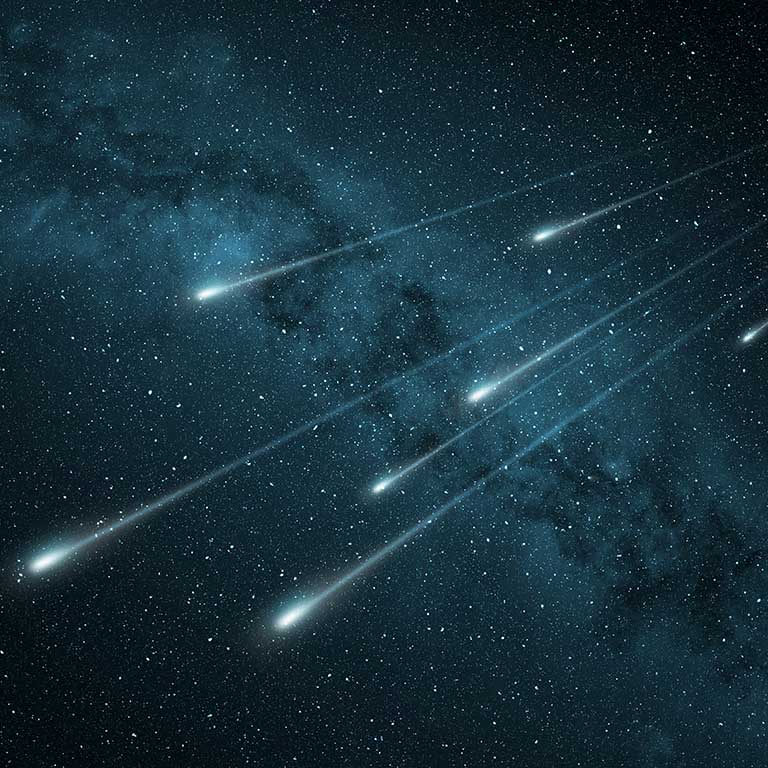For immediate release: October 1, 2021
BLOOMINGTON, Ind. -- Mercury will make its best morning appearance of the year during the last two weeks of October. The smallest planet will pass closest to the sun on Oct. 8 and then appear in the morning sky. Those watching in the Northern Hemisphere with a clear eastern horizon will see Mercury 5 degrees high an hour before sunrise on Oct. 21. It will brighten through the end of the month and remain clearly in view in morning twilight.
Venus will be visible soon after sunset low in the southwest as October begins. The planet will brighten as the month passes, reaching its greatest separation from the sun on Oct. 25. An hour after sunset each night, Venus will be between 7 degrees and 11 degrees high.
As soon as the evening sky is dark, look low in the south for two bright objects. The westernmost will be yellow Saturn, with white Jupiter 16 degrees farther east. Both planets will be good targets for telescopes, which will show Jupiter's four bright moons changing positions from night to night as well as Saturn's famous rings. Saturn will set about 2 a.m. local time as the month begins and just before midnight by Halloween. Jupiter will shine brilliantly in the constellation Capricornus, setting around 3 a.m. on Oct. 1 and two hours earlier at month's end.
Mars will be too close to the sun to observe during October. It will be back in the morning sky in December.
Meteor shower
The Orionid meteor shower will peak on the night of Oct. 20-21. The moon will be full just one day after the peak, so moonlight will wash out many of the meteors. If the moon were not interfering, observers might see as many as 20 Orionid meteors per hour in a clear dark sky. The Orionids appear to originate from the constellation Orion, which will rise before midnight in the east-southeast. The number of meteors will increase as Orion gets higher. The shower will be active for most of October, with meteors gradually increasing from the start and declining after the peak. The Orionid meteors are caused by dust particles from Halley's Comet, left behind in the comet's orbit.
Moon phases
The moon will be new on Oct. 6, at first quarter on Oct. 13, full on Oct. 20, and at third quarter on Oct. 28.
Author: Hal Kibbey Email: hkibbey [at] gmail.com


 The College of Arts
The College of Arts